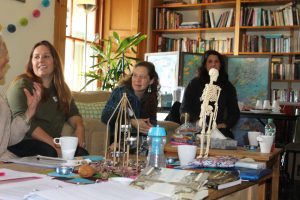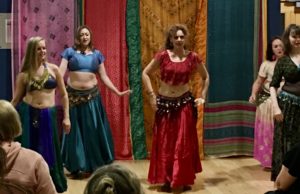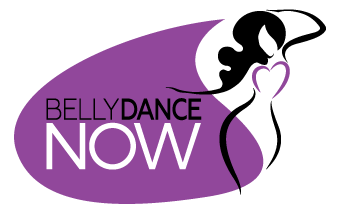Posted on 13/09/2021 by Kay Taylor
Isolation is an Illusion
by Galit Mersand

In our dance form great emphasis is given to developing the ability to isolate different parts of the body in movement.
A hip drop without a bouncing head or a shimmy without shaking shoulder is something we as teachers aim to help our students achieve.
But how do we do that, when in truth, isolated movement is an illusion? The reality is that every movement, no matter how small, is backed up by the entire body! When we move one part of the body another part must and does move too. It’s the way we’re built. I call it ‘active movement’ and ‘passive movement’
We often see students attempt to move only the part of the body that’s actively responsible for the move. For example in a hip drop, some students try move just one hip, the one going up and down, believing that the other hip is supposed to stay totally still THIS IS NOT POSSIBLE as the two hips are on either side of one pelvis, when one moves, the other must move too. One of the hips is activated by intentional muscle contraction (‘active movement’) and the other is moving as a result of the first one moving (‘passive movement’). It has to move to enable the full range of the hip drop.
Another common hip drop issue, is the locking (and when not locking, freezing) the supporting leg’s knee, this results in upper body bouncing, or a hip drop that looks too controlled and lacking percussiveness and oomph. The knee has to be unlocked and relaxed enough to bounce while the hip is going up and down.

Anatomy discussed
One of my favourite parts of teaching the Anatomy in the JWAAD safety course is when we start looking at analysis of movement. This is the exploration of which muscle (and joints) are involved in executing different moves and how to teach that. One of the reasons I love it so much is that I too learn things from the sharing part which make me a better dance teacher.
It is our job as teachers to help our students recognise which part of the body is performing the ‘active’ movement and which part needs to be relaxed enough to move ‘passively’. This is not only important for learning the movement but also for the SAFETY of our students.
Students, through lack of experience and knowledge of the mechanics of movement might (and often do) attempt to achieve isolation by locking parts of their body. This can result in injury, especially when repeated due to lack of a teacher’s correction.
Another aspect of the ‘active’ and ‘passive’ movements, specifically in isolation techniques is the body’s natural way to counter balance. This prevents us from falling when we move a certain body part out of the centre line. To someone

Galit and her girls
watching, the move (say a hip circle) will appear isolated. But the person performing it will notice that the upper body is also moving to maintain balance and poise. The counter balance of the body happens with every move that we make, including walking. I personally find it fascinating.
When I teach isolation to my students I tell them this:
“Isolation is an illusion, this is also true of your body. When one part of your body moves the other parts move too… and this is true of Life as well, when you move, everything moves”
_____________________________________
Some food for thought by Galit Mersand
Galit is co-teaching the next ‘Bellydance Safely’ course with Dorte Evelyn starting in November.
GOOD NEWS
We are inviting applications for an ‘Yvette Cowles Scholarship’ – the last date for submitting them is 30th September. This award is specifically for people who want to do our ‘Bellydance Safely’ course. You can get up to 50% towards the course costs.
G to this link:
‘Yvette Cowles Scholarship’



